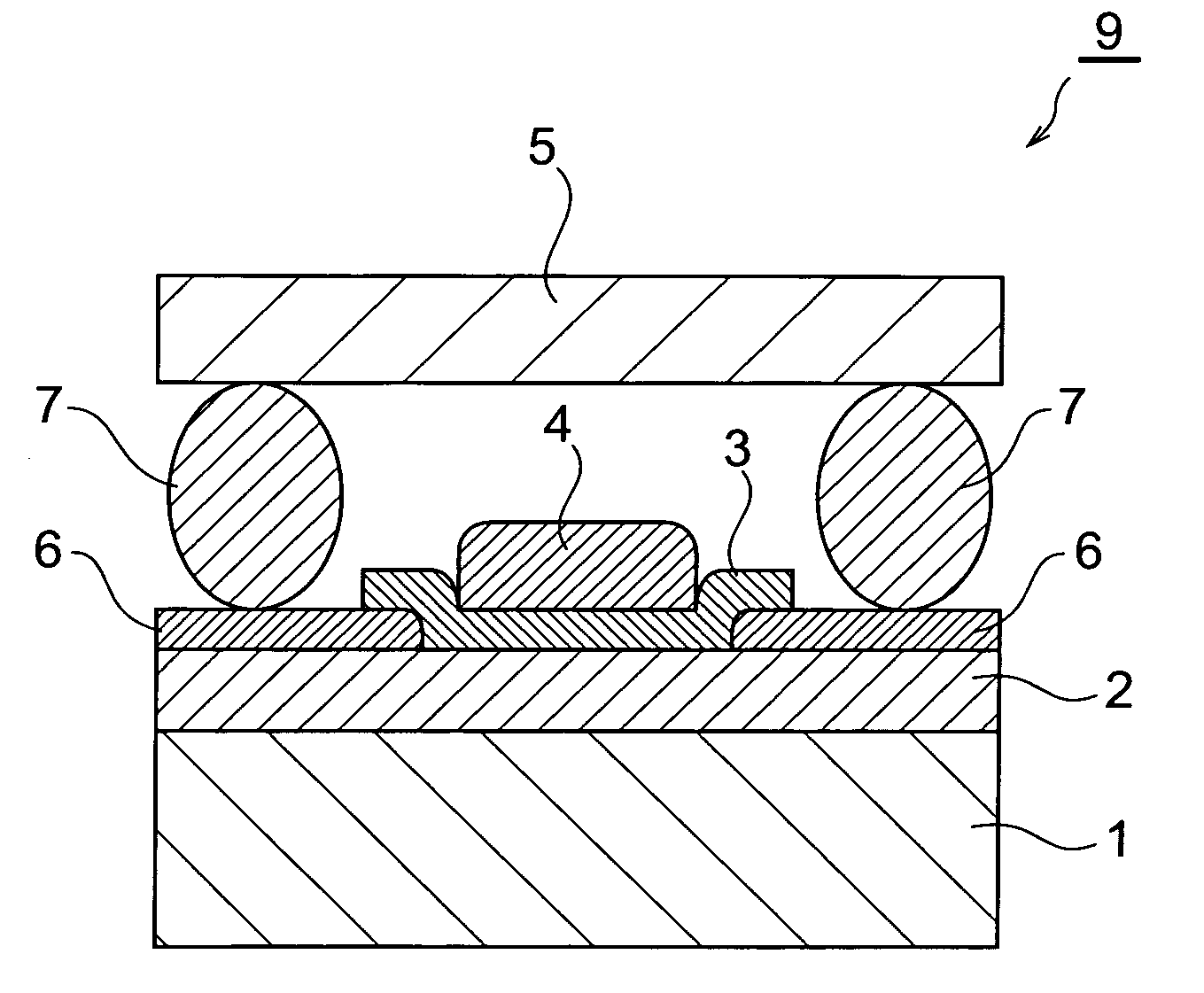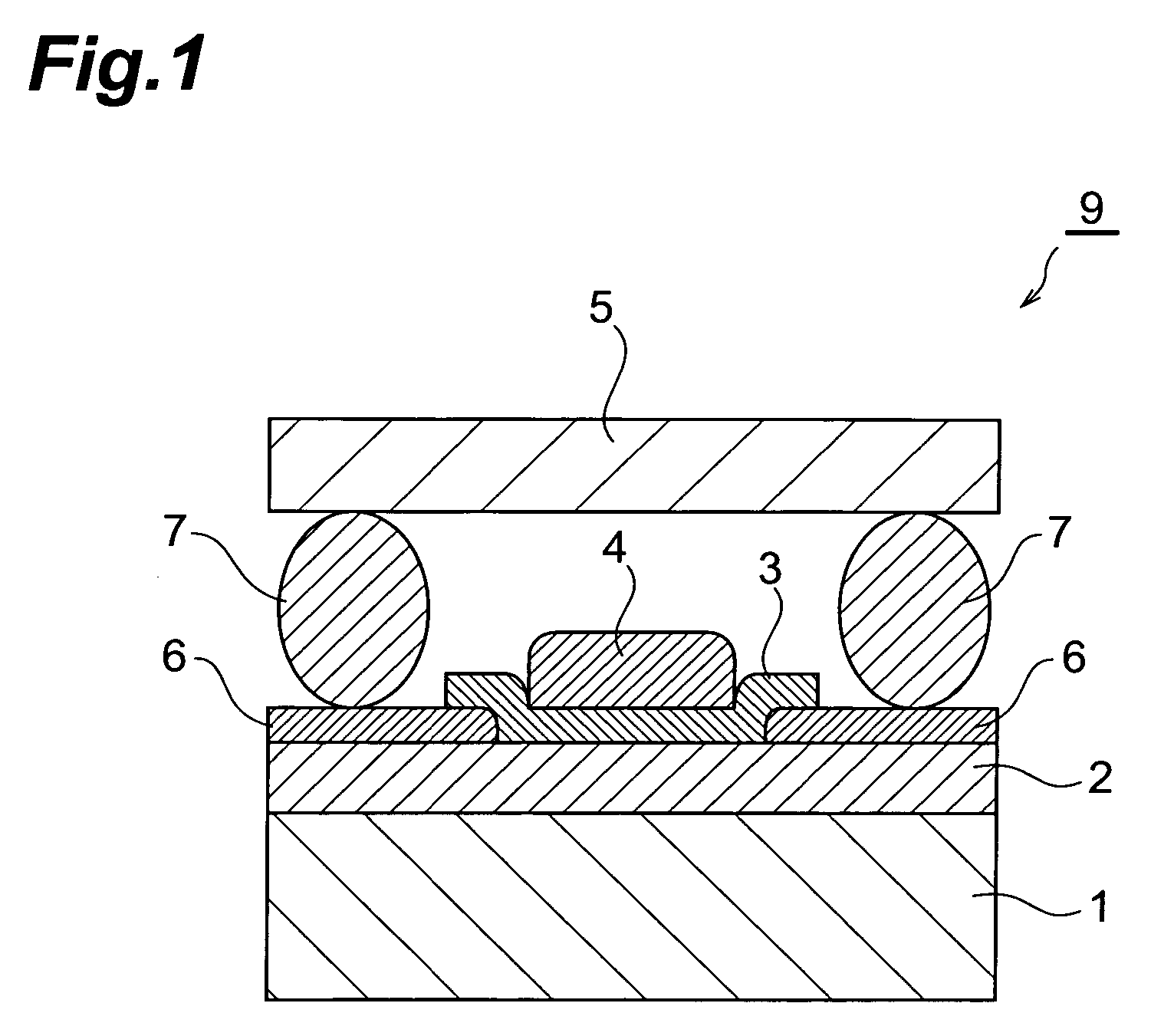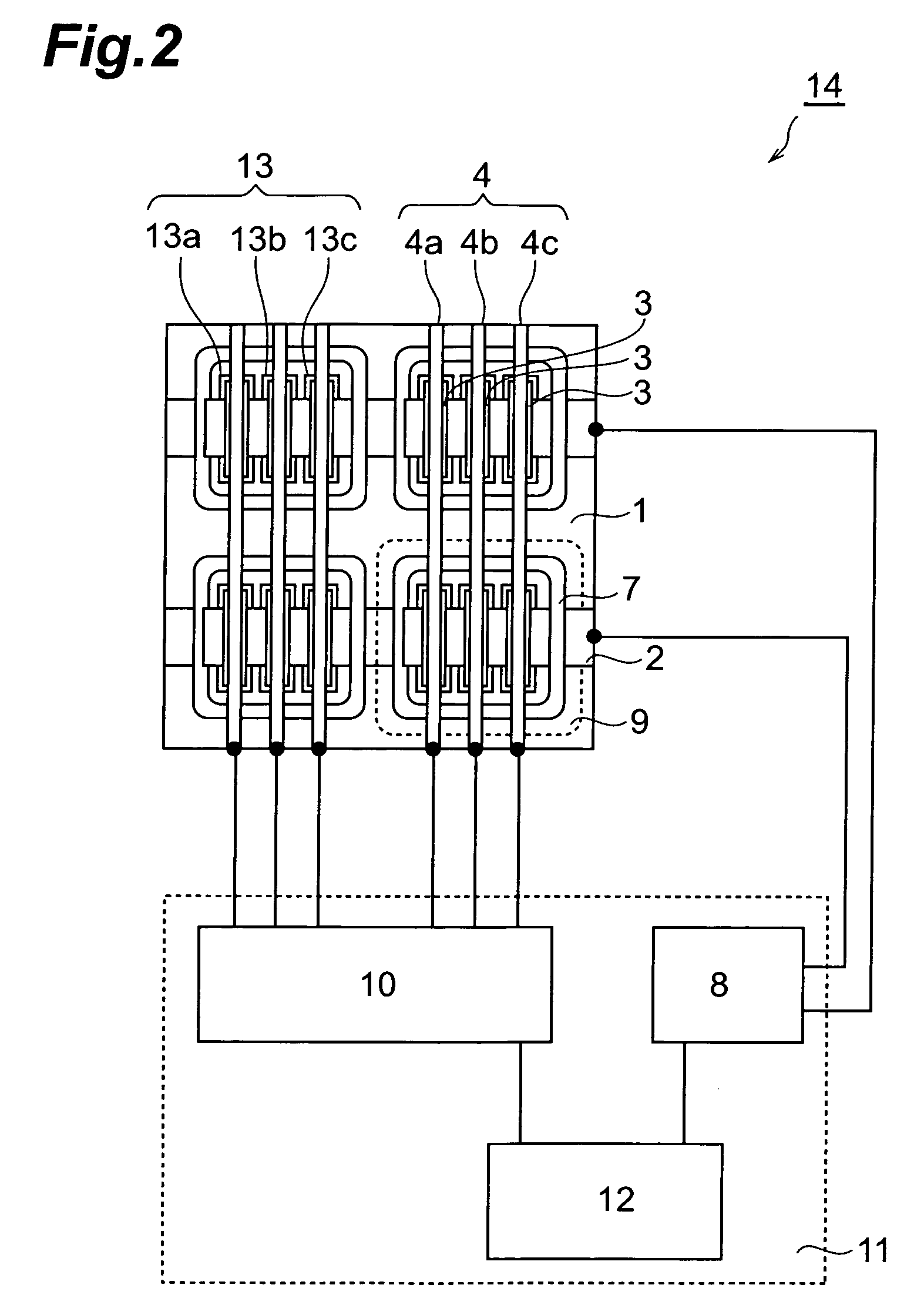Organic el device and organic el display
a technology of organic el and display element, which is applied in the direction of discharge tube luminescnet screen, other domestic articles, natural mineral layered products, etc., can solve the problems that the carrier transportability and stability of the polymer materials used in the conventional molecule dispersion type organic el element is not always satisfactory, and achieves excellent luminance and color display function, high heat resistance, and long life
- Summary
- Abstract
- Description
- Claims
- Application Information
AI Technical Summary
Benefits of technology
Problems solved by technology
Method used
Image
Examples
example 1
[0106] In air atmosphere, 12.5 g (53.6 mmol) of 5-bromoacenaphthene represented by the following formula (56) and 13.4 g (59 mmol) of 2,3-dichloro-5,6-dicyano-1,4-benzoquinone (DDQ) represented by the following formula (57) were dissolved in 100 ml of toluene, and were caused to react for 6 hours at 130° C. The resulting crude product was extracted with hexane, and then was refined with column chromatography, whereby 6.0 g of 5-bromoacenaphthylene represented by the following formula (58) were obtained as a yellow solid.
[0107] Next, 4.3 g (18.5 mmol) of thus obtained 5-bromoacenaphthylene and 5.0 g (18.5 mmol) of 1,3-diphenylbenzofuran represented by the following formula (59) were dissolved in 100 ml of toluene in nitrogen atmosphere, and they were caused to react for 24 hours at 120° C. After toluene was evaporated away from the reaction liquid, the residue was caused to react with 150 ml (18.5 mmol) of acetic acid added thereto for 1 hour at 145° C. in nitrogen atmosphere. The ...
example 2
[0113] Polyvinylcarbazole (PVK) represented by the following formula (65) as a hole-transporting host polymer and the vinyl polymer (vinyl monomer containing 3-(4-vinylphenyl)-7,12-diphenylbenzofluoranthene as a monomer unit) obtained by Example 1 were blended at a molar ratio of 70:30. A 2.0-wt % toluene solution of this blend was prepared, so as to yield a luminescent layer forming coating liquid.
[0114] An organic EL element was produced in a manner similar to Example 1 except that a luminescent layer was formed by using thus obtained coating liquid. The resulting organic EL element yielded blue luminescence due to the vinyl polymer including 3-(4-vinylphenyl)-7,12-diphenylbenzofluoranthene as a monomer unit, whereas its current efficiency was 1.0 cd / A at the time of constant-current driving at 10 mA / cm2. When a life test was conducted by constant-current driving at 10 mA / cm2, the luminance half-life was 200 hours.
example 3
[0115] A vinyl polymer including 3-(4-vinylphenyl)-7,12-diphenylbenzofluoranthene as a monomer unit was synthesized, and a 2-wt % toluene solution of the vinyl polymer was prepared in a manner similar to Example 1. Further, tetraphenylbutadiene represented by the following formula (66) was added as a blue-emitting dopant by a ratio of 2 wt % to the monomer unit in the vinyl polymer, so as to yield a luminescent layer forming coating liquid.
[0116] An organic EL element was produced in a manner similar to Example 1 except that a luminescent layer was formed by using thus obtained coating liquid. The resulting organic EL element yielded blue luminescence due to tetraphenylbutadiene, whereas its current efficiency was 2.1 cd / A at the time of constant-current driving at 10 mA / cm2. When a life test was conducted by constant-current driving at 10 mA / cm2, the luminance half-life was 330 hours.
PUM
| Property | Measurement | Unit |
|---|---|---|
| work function | aaaaa | aaaaa |
| wavelengths | aaaaa | aaaaa |
| transmittance | aaaaa | aaaaa |
Abstract
Description
Claims
Application Information
 Login to View More
Login to View More - R&D
- Intellectual Property
- Life Sciences
- Materials
- Tech Scout
- Unparalleled Data Quality
- Higher Quality Content
- 60% Fewer Hallucinations
Browse by: Latest US Patents, China's latest patents, Technical Efficacy Thesaurus, Application Domain, Technology Topic, Popular Technical Reports.
© 2025 PatSnap. All rights reserved.Legal|Privacy policy|Modern Slavery Act Transparency Statement|Sitemap|About US| Contact US: help@patsnap.com



